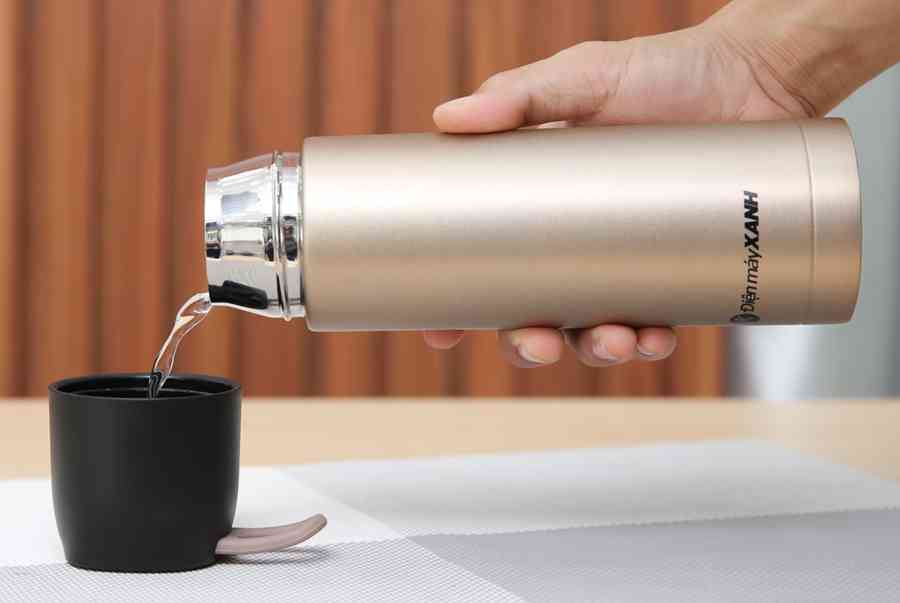Service user reference group
This chapter describes the process of setting up, as well as the input of, the SURG for this study. In addition, it contains a brief summary of an additional study suggested by the SURG and not part of the original proposal exploring the perspectives of carers of those in long-term forensic care.
Mục Lục
The service user reference group
Guidance from the funding body, empirical evidence159 and prior experience among members of the research team had reinforced the conviction that it would be beneficial to form an advisory group of service users and carers to help to shape the work. As a result, a SURG was formed; it met on 10 occasions throughout the research process and exerted a significant influence on the activities of the research team. The principal investigator and other members of the research team attended all SURG meetings, and SURG members also contributed to the research process in other ways.
Recruiting service user reference group members
The aim was to form a group that met the following criteria.
-
The group should be diverse within the frame of the research topic. We recruited people who had been forensic patients in the past, who were currently detained in a secure mental health setting, who cared for a family member using such services and who had prison experience.
-
Group members should be able to contribute in a group situation alongside academics. As it turned out, some members were highly educated and had prior experience of research, while others principally brought the voice of experience from their personal lives, and this helped researchers to see ‘the people behind the data’.
-
Group members needed the ability to broadly stay on task and help the researchers to focus their efforts to the best effect. This demanded the ability to challenge constructively and move on when necessary.
We recognise that the composition of the SURG as proposed here missed out the perspective of the ‘general population’; however, we felt that, on balance, ‘giving a voice’ to those marginalised patients in forensic settings was a priority for this study.
The patient and public involvement (PPI) lead (Peter Bates) contacted 100 organisations, including commissioners, providers, third sector, advocacy and involvement organisations drawn from a wider database of community groups. In addition, an advert was placed in a regular PPI bulletin that was circulated to 750 interested people in the region. Within the forensic community, consultant psychiatrists were invited to suggest names of patients they knew who might be interested in joining the group. Those who came forward were invited to an informal one-to-one meeting, which provided them with an opportunity to ask questions, discuss the research and talk about their personal experience. One participant expressed their commitment thus: ‘if we can make it work here, we can do it anywhere’.
Getting people together
Special consideration was given to enabling people using secure services to participate in the SURG, given the range of personal circumstances of the individuals concerned.
One person living in a secure setting wanted to participate while remaining anonymous. To comply with this request, one of the researchers took the agenda to the patient before each SURG meeting, and discussed the upcoming issues. The researcher then represented the patient’s views at the SURG meeting as best they could. Another detained patient in a secure setting was able to take part in the meetings via video link, although this took 6 months to organise. The video suite had to be booked, an escort was arranged and approval was obtained from the patient’s clinical team. It is to the individual’s credit that he repeatedly reminded staff about the meetings, encouraged them to check that arrangements were in place and was not discouraged by the lengthy preparations required. In future we aim to plan for these delays to ensure that everyone can start at the same time. At least one member of the group was unfamiliar with teleconferencing, and so had to get used to being on screen, especially in the room that was equipped with a voice-tracking zoom camera, and to the speaking protocols required.
Two members who attended the meetings in person were escorted by a member of their care team. This worked particularly well when the same member of staff regularly attended and was also able to contribute, although continuity was not always possible. The staff members’ perspectives were at times different from those of the SURG members, but this added to the debate rather than detracting from it. One member frequently asked his support staff member to sit in the background so that they would be discouraged from intervening in the meetings. There was also one carer in the group, the presence of whom added another dimension to the conversations. Two prospective members had permission from their care team to take unescorted leave and so bus, train and taxi travel arrangements were made, but the remote, rural location of their units made their participation impractical. The turnover of membership was probably higher in this SURG group than in other advisory groups, as people moved around the care system, adjusted to community life after institutional care and built a meaningful life for themselves, which sometimes meant that they favoured regular commitments over the very sporadic meetings of the SURG. Other members attended consistently in addition to contributing in other ways, as described further later in this chapter.
How the meetings were run
In consequence, the group was pleased with their attendance record. Service users attended the SURG meetings and their nominated representatives also attended the PMG and the SSC. Ten of the 12 project management meetings achieved PPI representation, 9 of the 10 SURG meetings planned at the outset took place, and all of the SSC meetings had service user representation. The average attendance at the SURG meetings was three or four service users plus the PPI lead. As one member declared, ‘I felt quite isolated when the project started, but not so towards the end’.
Prior to the forming of the SURG, one or two group members had some anxieties about the group, for example whether or not their views would be taken seriously and whether or not the research team was genuine about PPI. The facilitator wondered if reasonable adjustments needed to be made for service users regarding issues of trust or working with authority, and whether such issues might interfere with the running of the group. There were also considerable power differentials between SURG members on the one hand and the research team on the other, particularly as the principal investigator is also a forensic psychiatrist.160 It was also possible that people would be inhibited as a result of how they felt about being associated with this sector. Both of these concerns turned out to be unfounded.
In the light of best practice advice,161 participation payments were offered to SURG members. Our assumption that this would motivate group members in straitened financial circumstances turned out to be unfounded, confirming experience elsewhere that many people are motivated to become involved in health research by altruism rather than by profit.162,163 Additional negotiations were needed for people living in secure settings, to ensure that payments could be offered and accepted within those environments where patients do not always have access to money.
Chairing service user reference group meetings
During the 3-year life of the SURG three people took the chair, two of whom were service users. This new approach involved a part-time paid role being formed, the position being advertised, recruitment interviews being carried out by service users, and the postholder being employed for 4 hours per week to be worked flexibly, thus creating a model that could form a step-up opportunity for people wishing to return to employment. The role involved the following responsibilities.
-
Ensure that agendas and minutes are prepared and sent out in good time.
-
Chair SURG meetings.
-
Market SURG and recruit new members as necessary.
-
Stay in touch and offer low-level pastoral support to members.
-
Attend the PMG and other meetings to represent and report on SURG
This was not entirely successful, for a variety of reasons. Such new ventures engage with a number of sensitive issues that emerge in the uncertain ground that lies between full-time and sessional work, tailored roles and equal opportunities, volunteering and paid work, competence and flexibility, and independence and accountability.
The chairperson was supported by the principal investigator, who regularly attended group meetings, listened carefully to views and provided a full report about the progress made by the research team. Indeed, one member remarked that the openness of the principal investigator was a refreshing contrast to the aloofness of some members of the care team they had previously encountered, and this contributed to the success of the SURG. An administrator also attended and took minutes, freeing up the chairperson to focus on the discussion and dynamics.
Over time, the SURG gradually shifted away from ‘student mode’, in which group members expected to listen to a detailed presentation from the researchers, to ‘inquiry mode’, in which the majority of the meeting was spent discussing issues and sharing experiences. There was a perceptible growth in the researchers’ ability to distil the complex issues that they faced into a clear question that could be briefly introduced, that connected with the lived experience of SURG members and that released their perspectives to shed light on the research. One researcher commented that the SURG had ‘really helped me to understand people’s experience – and the impact on carers was a huge eye-opener’.
The group met more frequently and with shorter agendas at the start of the project so that relationships could be established, and it helped to use a meeting space that was unoccupied before and after the meeting, so that people could arrive early or stay to chat. Informality and warmth characterised the tone of the meetings, so that people could disclose aspects of their story and chat informally over coffee or lunch. This was especially important for people who travelled long distances to attend the meetings or had few opportunities for interaction at other times.
Impact on the research
The SURG contributed to the research in a variety of ways, not all of which led to explicit, discernible changes. Indeed, it would be rather patronising to conduct an obsessive search for signs of the impact of the SURG when the work of the other external advisors is not similarly dissected. Nevertheless, there are a number of topics that can be safely reported.
Early discussions reviewed both the data collection pro forma used for collecting data drawn from file reviews and the topic guide that directed the interviews. In respect of the pro forma, SURG members felt that the focus on offending history, diagnosis and treatment neglected the contribution of quality of life issues such as meaningful daytime activities, continuing education, family contact and the quality of staff–patient relationships. This debate immediately highlighted the difficulties of capturing and coding such lifestyle issues, and raised their profile for the patient interviews that followed the desk review of casefiles.
Advice from the SURG also helped in preparing for the interviews; SURG members advised on the use of language, the phrasing of questions, and arrangements for the provision of support to interviewees. The SURG reminded researchers of the importance of collective views about the tribunal process, and helped to settle on language that was sensitive to the forensic patient population.
A recurring theme was the rationale for patient transfers between wards within secure facilities and between units. While the research team struggled to create a meaningful typology of the myriad of explicit and implicit therapeutic regimes, SURG members similarly wrestled with the sense of irrationality that often accompanies these unsettling moves: the feeling that people are moving around rather than moving forward. SURG members also talked about treatment dilemmas: programmes that were compulsory but not always relevant to the individual, the way in which some patients saw treatment compliance as an admission of guilt, the lack of an evidence base for treatments and the inuring effect of repeated exposure to unwanted therapy. When the researcher reported that some patients were reluctant to talk about the past or the future, SURG members helped with possible explanations of the cognitive or emotional processes that led to a focus on living day to day. These conversations shed light on the circumstances of long-stay patients, helped to prepare researchers for the interviews they were to undertake and changed the content of the interview topic guide. The SURG also recommended that interviewees be provided with information about the local advocacy service, in case the interview brought up issues that needed to be addressed.
Some very useful suggestions were made regarding the strategy for recruiting research participants. At the outset, the plan was to approach patients via the responsible clinician, but SURG members suggested that the named nurse would be a more appropriate person to provide information and encourage people to take part, and so it proved. SURG members felt validated when their advice was taken up and found to be effective.
At the outset, the research team had envisaged patient interviews being conducted by a researcher working alongside a SURG member. This was contentious, and the final decision to abandon this plan was influenced by the following issues:
-
All of the detained members of SURG were opposed to the plan. First, their experience of two-to-one interviews was in the context of managing dangerous incidents and so they felt that this could be intimidating. Second, they felt that patients would be unlikely to trust non-professionals with highly confidential information that could ruin their chances of a new start in the community. Third, there was a worry that SURG members may be unduly influenced by their own experiences, rather than fully attending to the experience of the patient.
-
One member of the academic team was opposed to the plan. Although one SURG member asserted that lived experience meant that ‘basically we will ask appropriate questions in an appropriate way’, the academic held the view that interview skills of creating rapport, detachment and critical self-awareness take many years to hone and the qualitative research process is much more sophisticated than ‘having a chat’. One of the SURG members had worked as a researcher prior to using forensic mental health services, but this did not resolve the conflict within the group.
-
Security issues on some sites meant that service user researchers might not have been granted access, especially those who had criminal convictions. One member wondered if these barriers to access were erected by prejudice rather than a result of a fair risk assessment.
This debate was vigorous and challenging to the SURG, and it is to their credit that they drew the debate to a conclusion, helped the overall research team to decide a way forward and accepted the outcome with equanimity, despite the fact that, for some, it contradicted their personal ambitions and established best practice within some parts of the research community. The outcome remained a cause of dissension throughout the project.
When a researcher was recruited to carry out these patient interviews, the SURG ensured that lived experience of mental health issues appeared as a desirable characteristic on the person specification, that the advertisement was circulated to patient groups and that a member of the SURG sat on the recruitment and appointment panel.
The SURG members helped to select the questions to ask of the vast quantitative data set, and to identify the themes and categories that were developed and validated in respect of the interview transcripts.
At the outset, the research proposal had neglected the perspective of family carers, and early in the life of the SURG this omission was raised by the carer in the group. As a result, a master’s student was engaged to complete a small study on this theme, although ultimately this student did not complete their thesis, and the focus groups were completed by the research team and a member of the SURG, as described in more detail in the second part of this chapter (see Carers study). The SURG highlighted that staff–carer relationships are not always warm; this is perhaps because staff need to be present while patients see their relatives, but because they feel that they are intruding they tend to withdraw to the side of the room, disengage from conversation and try to behave as if they are not there.
Finally, service users commented on a number of draft documents and helped to produce a lay summary of the findings of the research to provide feedback to the participants and general public.
Governance
The research study held itself accountable to a variety of stakeholders. First, an early presentation was given to the Patients’ Council at the nearest high-security hospital to establish a working relationship and win support. Second, an independent service user champion who has been recognised for his contribution to the improvement of secure care was appointed by the funding body to sit on the Study Steering Group. This helpfully connected the SURG with wider national and international programmes and service improvement initiatives that take a patient perspective. Third, the various meetings (SSC, PMG and SURG) were interlocked by overlapping the membership and running them all on the same day, with the SURG meeting happening first. This had both a practical and a symbolic value. In practical terms, it meant that a member of the SURG could simply stay on and attend the PMG that followed their own meeting, while members of the research team arrived early to contribute to the SURG. Presentations were adjusted for each audience, but the planning and preparation were streamlined. In symbolic terms, the SURG was seen to have an equal value and, indeed, started the day rather than being tagged on at the end.
‘Extracurricular’ activities
Quite independently of their SURG membership, members were involved in a significant array of activities beyond the research itself, which gave them a broader insight. These networks extended to national charities and professional bodies across Europe and to other policy and research initiatives. As the findings from the research become clear, SURG members will also harness these networks to support dissemination. Each SURG meeting included presentations about progress and often included discussion of research methods. In addition, two training events took place, one introducing SPSS software for the analysis of quantitative data and the other introducing NVivo, used to analyse interview transcripts. The SPSS training included one-to-one training with the SURG member. The training materials developed for these sessions are being reused with students. Participation in the SURG also enabled members to engage with a number of other activities, including co-authoring publications, conference attendances, presentations and a scientific mission, funded through a European project (COST action of forensic psychiatry), whereby the member of the SSC went to visit Dutch long-stay services. His experiences have been published on the Mind website (www.mind.org.uk).
Learning from the project
Four particular issues arose during the work of the SURG, which may have broader application in PPI work. First is the impact of participation on the individuals concerned. The SURG often talked about the irrationalities of the current system in which there is no obvious care pathway, unproven treatments are applied, and people spend many years undertaking activities that carry no value or meaning to them. Exposing these issues in conversation with the very people who are subject to such processes can cause frustration and distress, and it was a credit to SURG members that they were explored with honesty and resilience, and to researchers that they discussed such matters candidly.
Second, courageous conversations took place about the future. Patients must face the harsh realities of life, such as their lack of power compared with that of the clinical team and the tribunals, while holding on to hope about their stay. As one person put it, ‘it’s not until you fully recount these daily events that you realise how depressing, boring and inactive we really are. I found this quite upsetting’. This conversation was mirrored by discussions with staff about the effectiveness of their interventions, balancing the recognition of treatment resistance with clinical hope. One way to reduce the tension is to shrink aspirations until it is hard to imagine an alternative way of doing things, and yet one task of the SURG was to explore these very alternatives. For example, we found that patients in the Netherlands are able to make a home within a secure service, and recover a degree of control in a way that English patients are unlikely to think possible, meaning that they would be unlikely to spontaneously ask for this option in the service.
Third, the SURG touched on the variety of approaches to consent that play out in secure settings. In treatment reviews, the service has a duty of care to review everyone that is receiving a service at public expense – whether or not the person agrees to the process – while research ethics uphold the right of the patient to withdraw their participation. Again, research ethics demand sophisticated processes to ensure anonymity, while commissioners ask for extensive details of what is being purchased for each named individual without asking the patient’s permission for that information to be disclosed. Such differences may appear rational to an academic who has been schooled in these fine details, but to lay people and many patients it is hard to understand the reasons that some decisions are made by the patient and others are made by staff. Sometimes the community members of the SURG were more alert to these issues of power and control than the detained patients, who had adopted a laissez-faire survival strategy on this matter.
Fourth, although data were fully anonymised before they were sent from the treatment facility to the research team, there were some concerns that small sample sizes in the long-stay community could inadvertently lead to identity reattribution by patients or staff, and so SURG members were asked to sign a confidentiality commitment.
Conclusion
This report shows that the research has been sharpened through the contribution of the SURG. Researchers reported real value in the free-ranging discussions and the insights they gained from their participation in the group. As might be expected from other studies,164 SURG members reported that benefits arose from their participation. One member delighted in returning to an academic environment, while another found the simple experience of being believed and having others validate her own experience to be deeply significant.
Early experiments with appointing a service user to the paid role of chair for the SURG have improved our understanding of how this role might work in the future. The researchers’ commitment to supporting the SURG and making the most of the opportunity to glean views and experiences from group members paid dividends. Finally, and perhaps most significantly, the SURG demonstrated that security arrangements in forensic services are no barrier to meaningful involvement in research, as long as sufficient preparations and adjustments are made.
Several issues remain that may not be amenable to tidy answers. These include the challenges of critically discussing services with people who are currently immersed in them, negotiating consent with people who live in a tightly controlled environment and managing confidentiality in small communities. Our work has brought some of these issues to focus, but the task of resolving them must fall to others.






